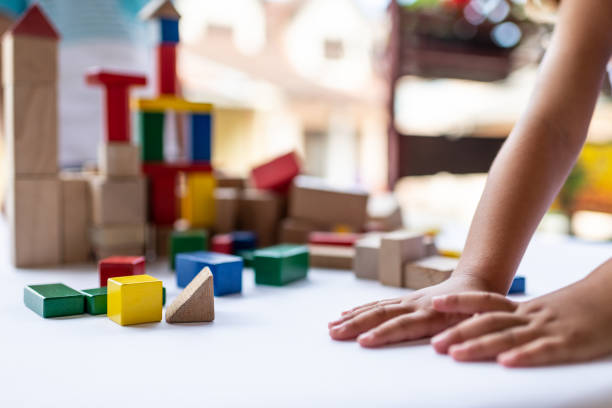IT IS THE MOST USED EDUCATION MODEL IN THE WORLD’S DEVELOPED COUNTRIES
This education model, which is a child-centered education system put forward by Italian Professor Maria Montessori; It is accepted as the most common education model in many countries of the world, especially in Germany, Italy and America. The essence of this system is based on an approach in which the child discovers his/her own abilities rather than the top down curriculum, and where the teacher guides rather than knows.
CLASSROOM LAYOUT IS SUITABLE FOR REAL LIFE
In Montessori classrooms, each object has an instance and when a child requests a piece that is currently being used by another child, it waits for its turn. This in turn generates important social virtues. The child begins to see that he must respect the work of others, not because someone says he should, but because he encounters this reality in daily experience. Another virtue emerges from the child’s experiences: being patient. It is impossible to teach such morality to a three-year-old child. Only experience can teach this, and because people are accustomed to seeing children fight to get what they want under other circumstances, they are often surprised at Montessori schools where children wait in line even when there is no one to order them. However, what does this is the carefully prepared environment and the freedom that children find in this environment.
CLASSES ARE MUCH LARGER THAN CONVENTIONAL CLASSES
Because Montessori classrooms are much larger than traditional schools, differences in character are more evident, allowing for greater experience. In small classes it is not so easy
COMBINED EDUCATION SYSTEM IS APPLIED AND EVERY CLASS HAS TWO OR THREE TEACHERS
In this education system, observing the student has a very important place. Each class has a total of two or three teachers, with one teacher for 8-10 students. This allows teachers to observe children from different angles.
Mixed age system is applied in the classes and children between 3-6 years old are together. This is extremely important. In this way, the little ones see what the elders are doing and ask them to explain. They also get the clarification they want right away, which is a really valuable lesson. The mind of a 5-year-old is much closer to the mind of a 3-year-old. That’s why little ones can easily teach each other something that we have difficulty in explaining. In traditional classrooms where all children are the same age, individual differences among children can lead to feelings of jealousy and humiliation. This undermines the morale of children and undermines their self-confidence. Young children, on the other hand, do not envy their elders who teach them something. They are not ashamed of an older child knowing more than they do because they know that when they grow up, it will be their turn. Adults also develop a sense of responsibility and protecting and owning their younger ones. There is love and admiration on both sides, a true brotherhood.
NO REWARDS AND PENALTY SYSTEM
In the Montessori method, the child’s success or good behavior is not evaluated with a reward. Every job that is successful and every positive behavior brings its own right and beautiful natural result. The desired positive result is itself, in mathematics, ordering the Red – Blue Sticks and placing the number cards correctly is an indication of the success of the struggle, the child did not do this for an ornament to be worn on his collar as a result, the purpose of the child is to enjoy learning. Or, a positive behavior among friends will bring social acceptance and preference, which is the main reason for the child to show that behavior.
There is no punishment as there is no reward, children experience the natural or logical consequences of negative behavior. Punishment is the evaluation of the child’s behavior by an adult, which always results in over- or under-appraisal due to over- or under-appraisal. This leads the child to misunderstand the outcome of his behavior. The child does not gain experience. Moreover, every punishment degrades personality and negatively affects development.
THE CHILD OWNS THEIR OWN LEARNING TIME
In the traditional education model, the teacher tries to progress according to his own daily plan, regardless of the child’s learning speed. While this causes some children to get bored, it causes some children to switch to other activities without achieving the necessary gain. The rivalry and jealousy between the children come to the fore.
In Montessori, an individual plan is prepared for each child. The child determines the learning time himself. Children are given the opportunity to repeat as many times as they want. An early learner will be able to move on to a new study. Because everyone has a different rhythm in learning.
CHILDREN CAN WORK IN DIFFERENT FIELD ACCORDING TO THE SAME CLASS AND TIME.
In the traditional education model, all children are directed or even forced by the teacher to do the same activity. This situation causes some children to not enjoy the activity and disturb their environment. In the Montessori education system, children can work with the materials they want, whenever they want, wherever they want. They enjoy school because they can work in line with their interests.
THE CHILD DOES THEIR OWN “ERROR CHECK”
Error control in materials occurs when the child finds his own mistake. No need for warning, approval or correction from anyone else. It is allowed to self-correct. Thus, independence from the adult occurs naturally.
